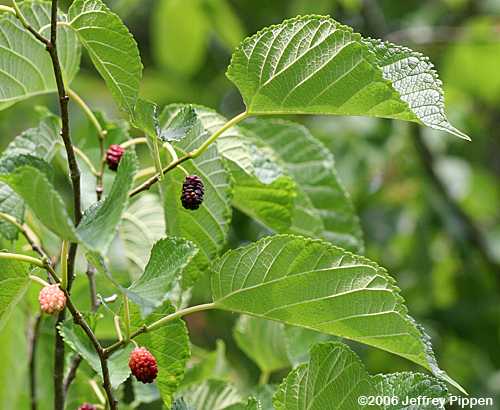
25 May Trees That Attract Birds
Knowledge is important, and as we did our research, here is some useful info we found from ( www.wildflower.org ) for our readers:
QUESTION:
What fruiting trees/shrubs other than red mulberry are good to attract native birds (and for bird-watching opportunities)? We’d prefer native species but does white mulberry attract as many bird species as red mulberry? For each tree/shrub species, can you provide a list of the bird species attracted to it?
ANSWER:
Morus rubra (red mulberry) is native to Central Texas and does produce berries that birds like. According to this California Rare Fruit Growers Association website, White Mulberry is native to eastern and central China and, therefore, not in our range of experience nor our Native Plant Database. We want to explain, if we can, why whether or not a plant is native is very important to the wildlife it attracts, including birds.
We can find some trees and shrubs native to Central Texas that, in the “Benefits” section of our page on each plant in our Native Plant Database, say they attract birds. We have no listings on which birds are attracted to which plant. We have a list of books (see Bibliography below) that should help you determine which tree or shrub is best for your area and what wildlife benefits they provide. We checked some bird books, including our favorite, A Field Guide to The Birds of Texas, which will give a very short account of what kind of food each type of bird requires. For instance, raptors, like owls, hawks, and eagles, go after small mammals and birds. Granivorous birds are very fond of seeds. The waterbirds dine on fish, frogs, and snakes.
But what all have in common is that they need protein, just like animals that don’t have wings. Anyone who is interested in attracting wildlife in their gardens should read Bringing Nature Home-How Native Plants Sustain Wildlife in our Gardens (See Bibliography below). One statement in this book will help us understand what birds eat:
“Nearly all terrestrial birds rear their young on insects, not seeds or berries. The bird nourishes its young with herbivorous insects that have captured the energy stored by plants.”
The birds will eat berries for a treat and seeds from grasses or feeders for easy access, but when they are feeding the young, insects are on the menu. Chapter 13 of this book is titled “What Does Bird Food Look Like?” and is followed by 58 pages of pictures of bugs which, at one time or another, everyone has tried to get rid of by using pesticides. For the most part, insects must feed on the plants they are accustomed to feeding on because they have been doing so for millennia. Therefore, they feed on plants that have also been there for a very long time, native plants that grow well in that particular climate, soil, and temperature zone. The birds that are there are there because they can find food, whether they are stay-at-home birds or migratory. For instance, if you planted a tree native to New York (and not to Texas) in Central Texas, it might not survive our summers and it probably would not interest the local insects. The birds might come and light in the tree, but when they find no insects they are accustomed to eating, they will give that tree a fly-by. And we certainly don’t believe any New York birds will come down here looking for food.
While we are on the subject of what birds eat, how about hummingbirds? Most of their diet is nectar from flowers, but they also eat ants, mosquitoes, aphids, gnats, midges, caterpillars, weevils, small beetles, whiteflies, and insect eggs. The females feed the baby hummingbirds with a mixture of nectar, tiny insects, and spiders, thus providing the protein that baby hummingbirds need to grow.
Now, we will go to our Recommended Species section for Central Texas and give you the promised list of shrubs and trees that will do well in Central Texas. We will also go to the webpage on each plant (which you should also do by following the link) to see if that plant has significant benefits to wildlife. From there, you can construct your own list of plants you want in your garden. You might also consult this Audubon Society and the Texas Audubon Society site to see if they have any specific suggestions for plants, but always check to make sure anything you plant is native to your area. Another resource you should check with is the National Wildlife Federation. These lists are only a start, you can find many more in our database.
Trees with Benefits to Wildlife for Central Texas:
Cercis canadensis var. texensis (Texas redbud) – The nectar is sought after by butterflies, bees, moths, and insects. The leaves are sometimes browsed by deer. The seeds are eaten by granivorous birds.
Chilopsis linearis (desert willow) – attracts birds, hummingbirds, butterflies
Diospyros texana (Texas persimmon) – attracts birds and butterflies
Frangula caroliniana (Carolina buckthorn) – Many bird species feed on the bright red fruit
Shrubs with Benefits to Wildlife for Central Texas:
Callicarpa americana (American beautyberry) – The seeds and berries are important foods for many species of birds, particularly the Northern Bobwhite.
Ilex vomitoria (yaupon) – Many species of birds eat the fruit, but usually only in late winter after several freezes and thaws. Mammals eat the fruit as well, and the flowers attract insects. Birds employ the dense branches for nesting sites.
Leucophyllum frutescens (Texas barometer bush) – Nectar-insects, Nesting site, Cover
Malvaviscus arboreus var. drummondii (wax mallow) – Nectar-hummingbirds, Nectar-butterflies, Nectar-moths, Nectar-insects, Fruit-birds, Fruit-mammals

